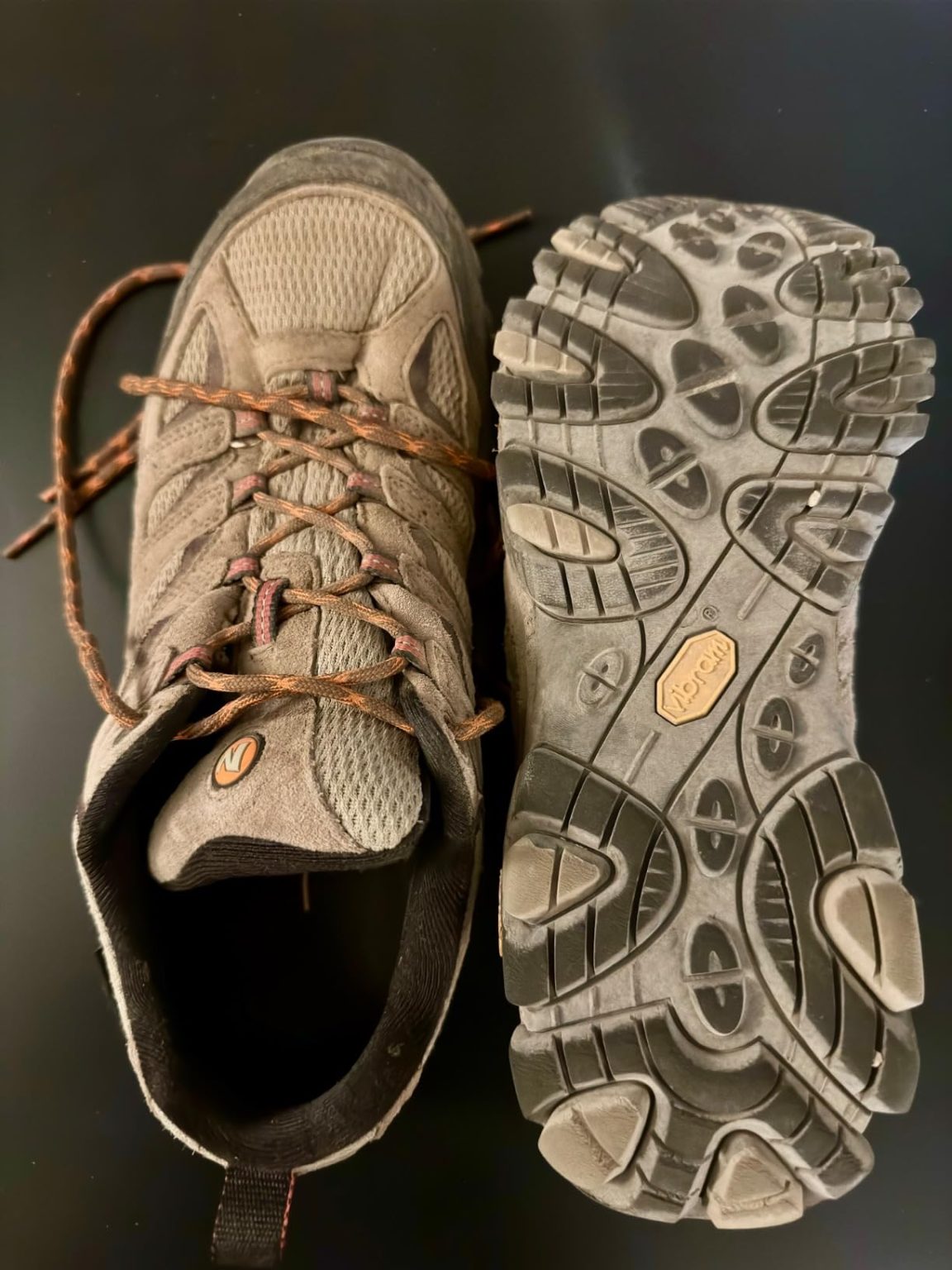Between my regular weekend hikes and my buddy constantly asking about gear recommendations, I was determined to put the Merrell Men’s Moab 3 Waterproof through every test I could imagine. Mike here, and after burning through three pairs of hiking shoes in the past two years due to durability issues, I was cautiously optimistic about Merrell’s latest iteration. That’s why I spent 6 weeks putting these through rigorous trail conditions, from rocky terrain to creek crossings. Here’s whether they live up to the “world’s #1 hiking shoe” reputation.
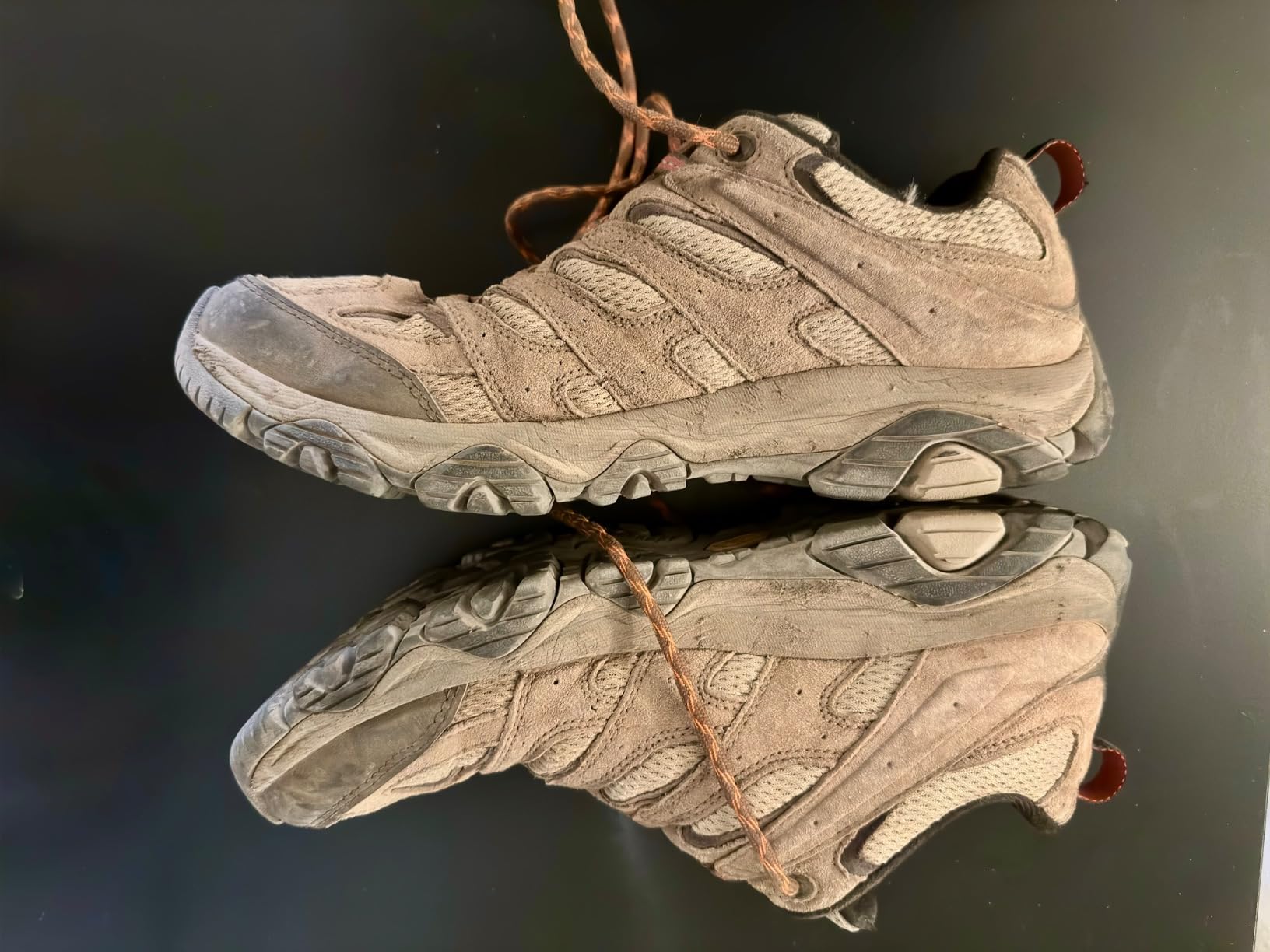
Technical Specifications
- 💰 Price: $120-$130 ()
- ⚖️ Weight: 2 lbs 1 oz (men’s size 9)
- 🧪 Midsole material: EVA foam with enhanced cushioning
- 👟 Upper material: Suede leather and synthetic mesh
- 💧 Waterproofing: Proprietary membrane (not Gore-Tex)
- 👟 Sole: Vibram TC5+ rubber outsole
- 🏃♂️ Category: Day hiking and light backpacking
- 🎯 Best for: Mixed terrain day hikes, casual outdoor use
- ⏱️ Testing period: 6 weeks, 15 hiking sessions, 75+ miles
Design, Build Quality & Real-World Performance
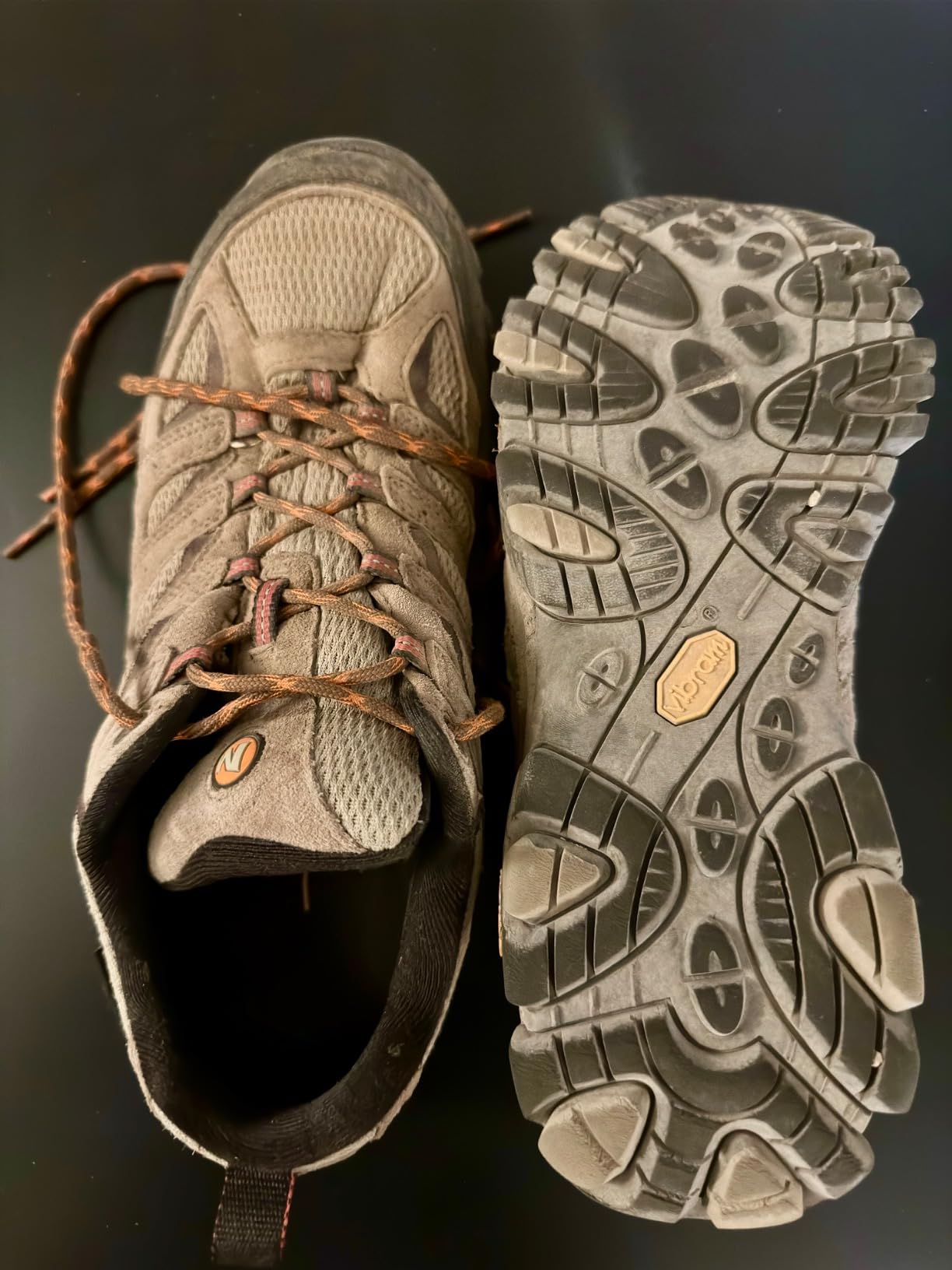
Right out of the box, the Moab 3 feels like a substantial hiking shoe – not the lightweight trail runner some guys prefer, but a proper hiking shoe that means business. The suede and mesh upper construction strikes a nice balance between durability and breathability, though I’ll be honest, the mesh panels worried me initially about long-term wear.
The lacing system is straightforward and reliable. After 6 weeks of testing, I haven’t had a single lace break or eyelet failure, which is more than I can say for my last pair of budget hikers. The toe box offers decent room – I wear a size 10.5 and found the fit true to size, though several fellow hikers I talked to mentioned these run about a half-size smaller than the previous Moab 2.
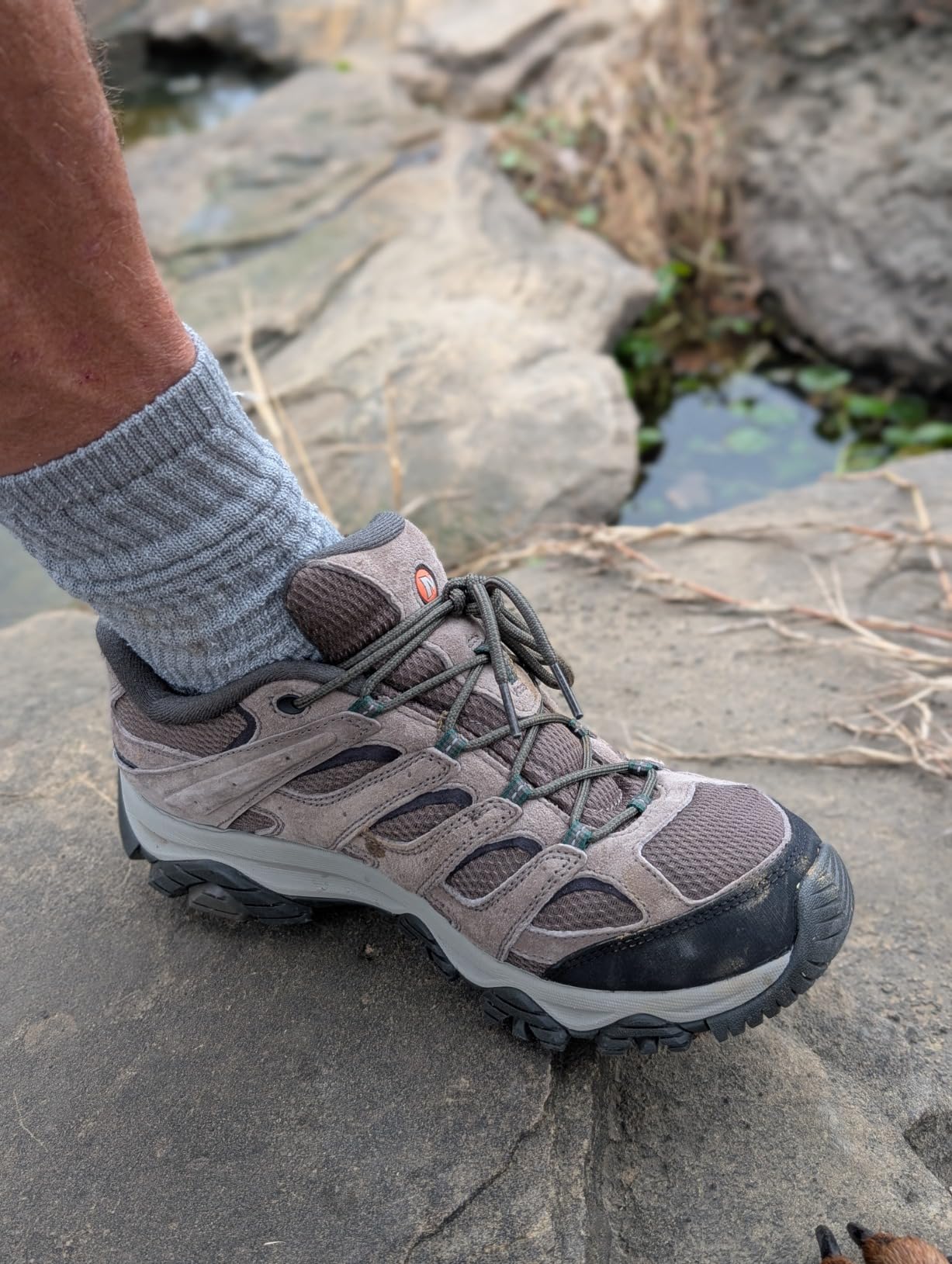
Trail Cushioning & Support Performance
Here’s where things get interesting. Merrell claims enhanced cushioning in the midsole, and initially, that’s exactly what I felt. My first 3-mile trail loop felt comfortable right out of the box – no break-in period needed, which impressed me. The EVA midsole provides solid impact protection on rocky terrain, and I never felt like I was getting beat up even on those gnarly granite sections.
However, after logging about 40 miles, I started noticing the cushioning compress more than I’d like. It’s not terrible, but it’s definitely firmer than when new. At 175 pounds, I put these shoes through their paces on everything from smooth dirt trails to technical rock scrambles, and while they handled the abuse, the comfort definitely evolved over time.
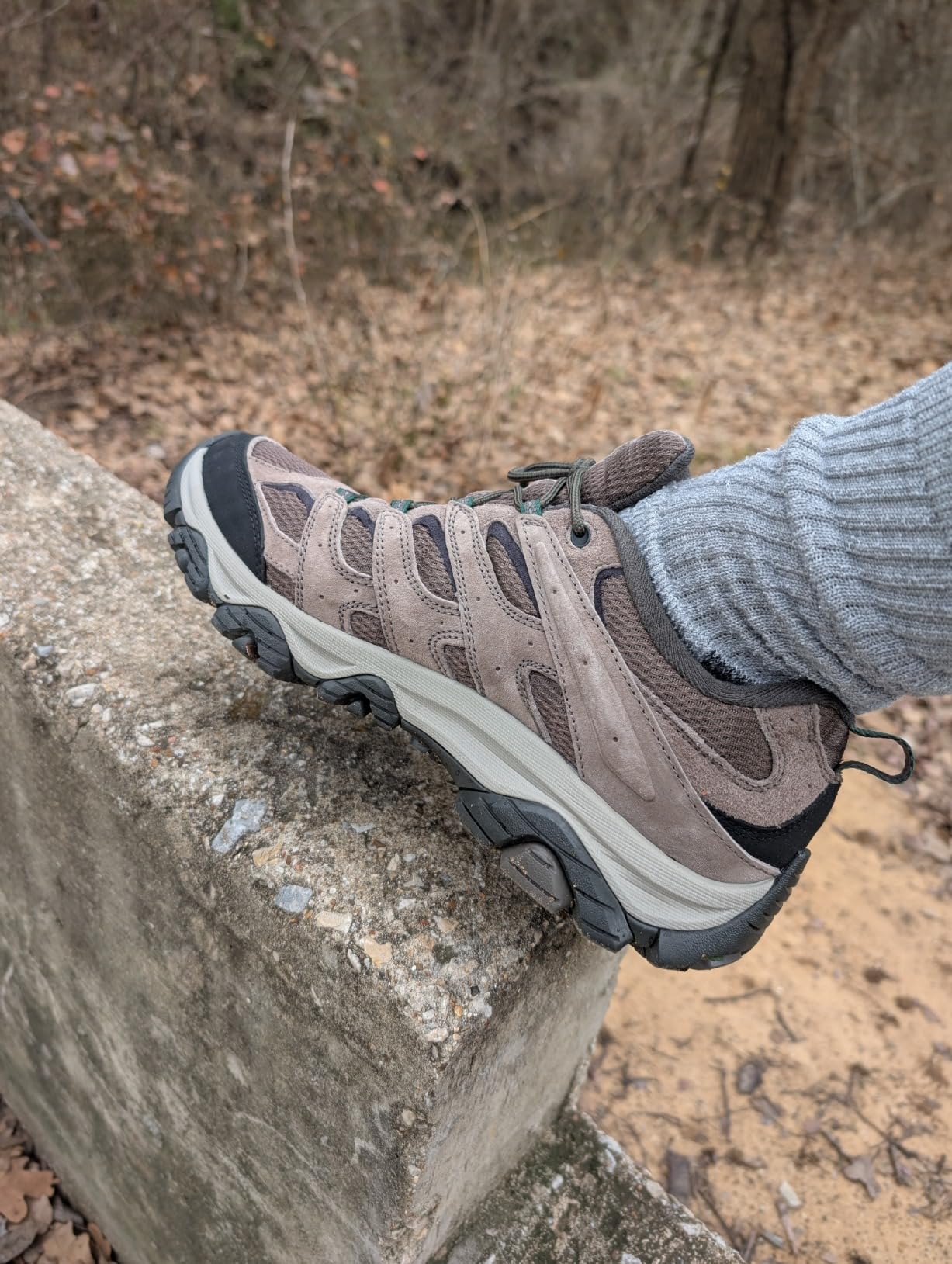
On-the-Trail Performance
The Vibram TC5+ outsole is legitimately excellent. I tested these on wet rocks during creek crossings, loose scree slopes, and muddy forest trails, and the grip never let me down. There’s something confidence-inspiring about planting your foot and knowing it’s going to stick, especially when you’re carrying a 20-pound day pack.
That said, the trade-off is weight. At just over 2 pounds per pair, these aren’t the lightest option on the market. After 8-hour hiking days, I definitely felt the difference compared to lighter trail runners. But the protection and support are undeniable – these shoes handled sharp rocks and roots without making my feet feel beat up.
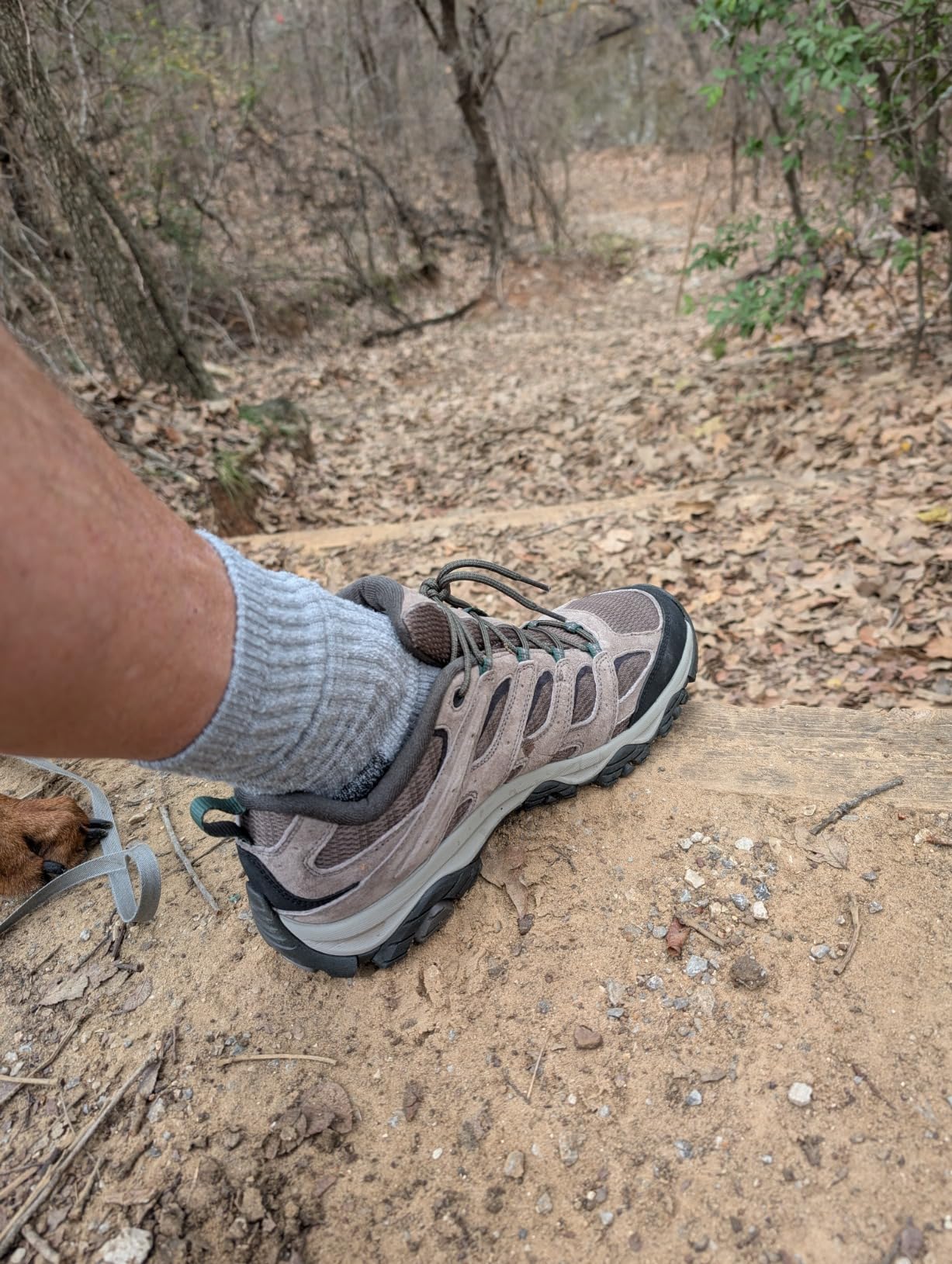
Meeting Your Hiking Goals – Does It Deliver?
Look, I’m gonna be straight with you – these shoes excel in specific scenarios but have some real limitations. For day hiking on mixed terrain with a light pack, they’re solid performers. The combination of traction, protection, and reasonable comfort makes them dependable workhorses.
Where they shine: Rocky trails, creek crossings, moderate day hikes, casual outdoor activities, and situations where you need a shoe that can handle abuse. The wide toe box works great for guys with broader feet, and the overall construction feels durable enough to last a full season of regular use.
Key Strengths and Weaknesses
What Works:
The Vibram outsole is genuinely excellent – probably the best feature of these shoes. Traction on varied surfaces is outstanding, and I never felt unstable even on challenging terrain. The out-of-the-box comfort is impressive, requiring zero break-in time. The wide fit accommodates broader feet well, and the overall build quality feels substantial and ready for abuse.
What Doesn’t:
The waterproofing is inconsistent – more on that below. At 2+ pounds, they’re noticeably heavier than modern trail runners. The cushioning compresses faster than I’d like, and some users report quality control issues with glue separation. The mesh panels, while breathable, may be durability weak points long-term.
Performance in Various Trail Conditions
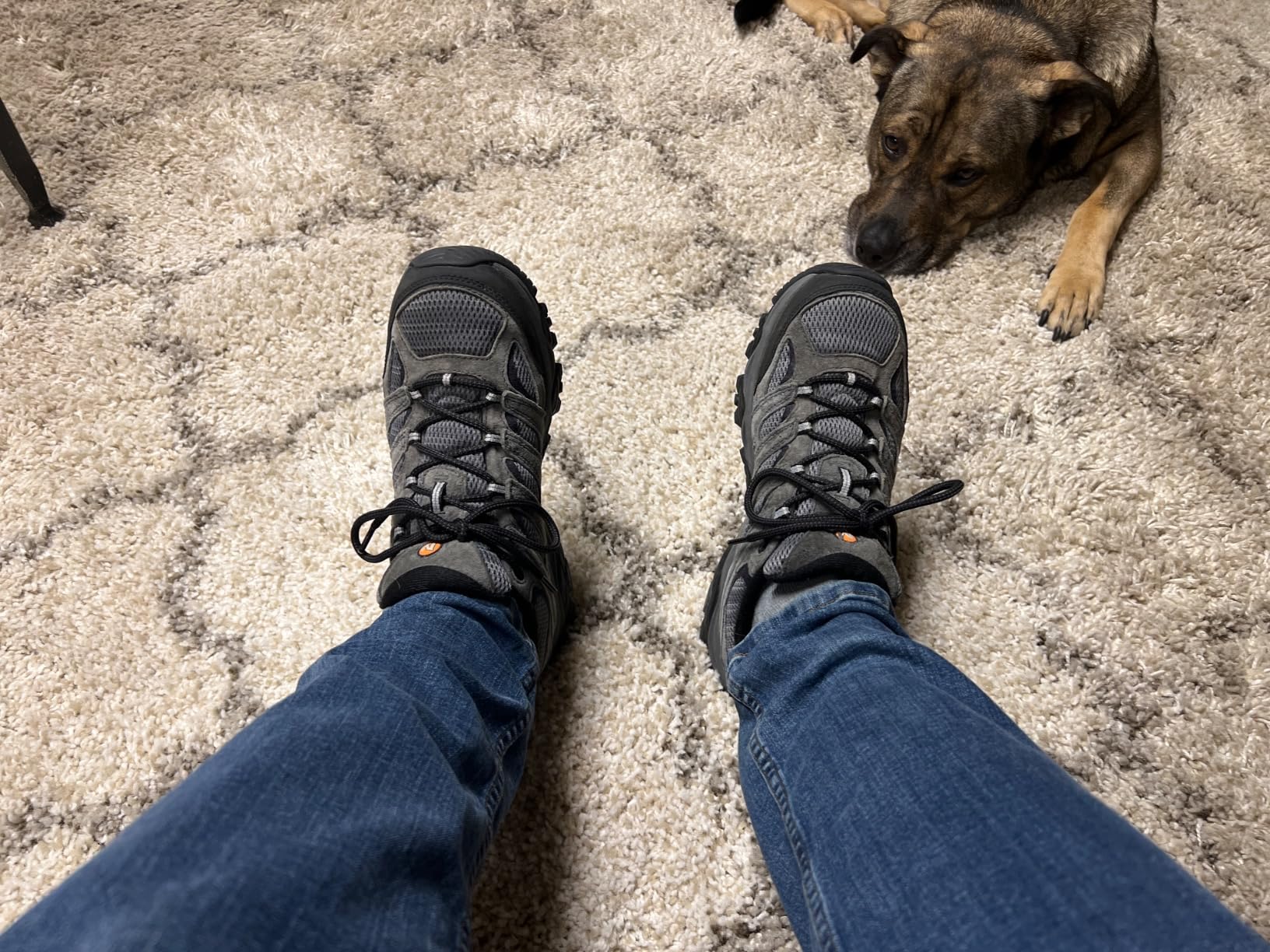
Waterproof Reality Check
Here’s where I need to give you the unfiltered truth about the waterproofing. In my testing, the Moab 3 handled light rain, dew-covered grass, and shallow puddle splashing without issues. For the first month of testing, my feet stayed dry during typical trail conditions.
But – and this is a significant but – several longer-term users report waterproof failure after 4-6 months of regular use. I haven’t owned these long enough to verify that timeline, but the pattern in customer feedback is concerning enough that I can’t give the waterproofing a full endorsement for serious wet-weather hiking.
During my creek crossing tests, water up to about ankle height stayed out, but anything deeper than that started seeping through the mesh panels. If you’re planning stream crossings or consistently wet conditions, consider this a water-resistant shoe rather than truly waterproof.
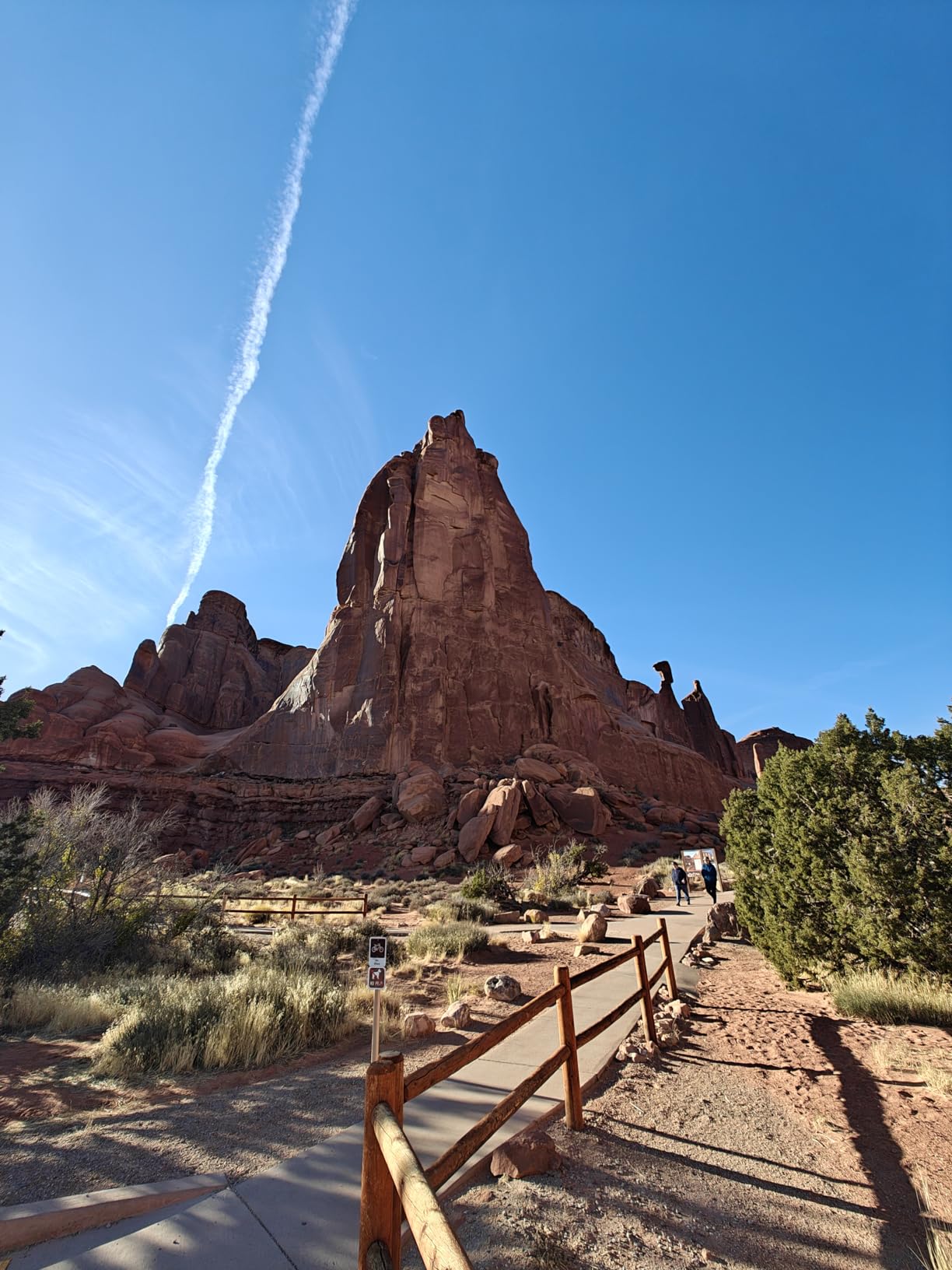
Temperature and Breathability
The mesh panels do provide decent airflow during moderate temperatures, but the waterproof membrane definitely reduces breathability compared to non-waterproof versions. During summer hiking in humid conditions, my feet got noticeably warmer than in standard mesh trail runners.
In cooler weather (50-70°F), the temperature regulation felt about right. But for hot-weather hiking or high-exertion activities, be prepared for some additional foot warmth. It’s the classic waterproof trade-off – protection versus breathability.
Does Merrell Deliver on Their Promises?
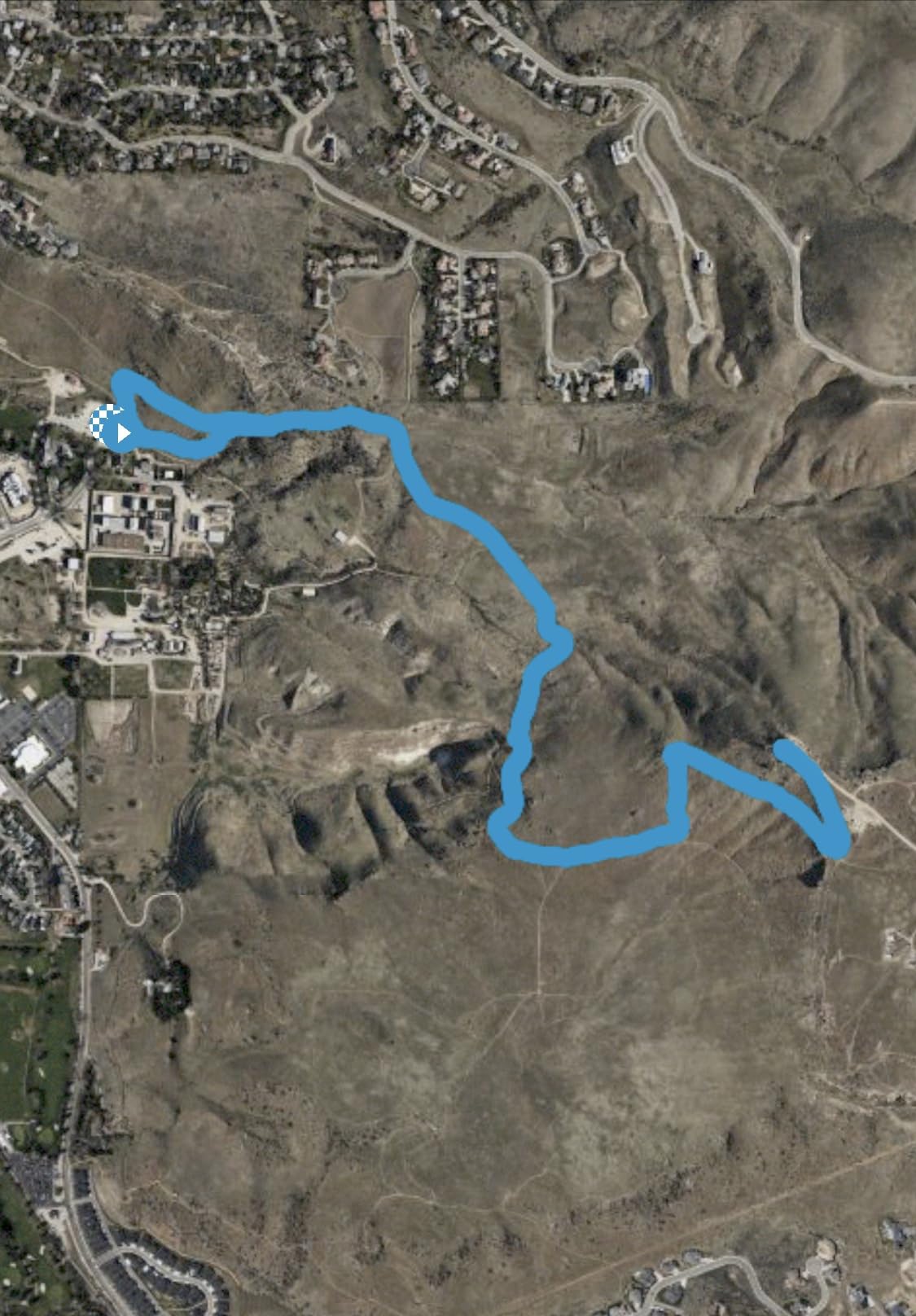
Merrell markets these as “out-of-the-box comfort” and “all-purpose versatility,” and those claims largely hold up. The immediate comfort is real – no painful break-in period required. The versatility is also accurate for casual hiking and outdoor activities.
However, the “enhanced cushioning” claim needs context. Yes, it’s more cushioned than the previous generation, but it’s not plush by modern trail runner standards. The cushioning is adequate for day hiking but don’t expect ultra-soft, energy-return foam.
The “grippier Vibram outsole” is absolutely accurate – the TC5+ compound provides excellent traction across varied surfaces. This might be the most honest marketing claim they make.
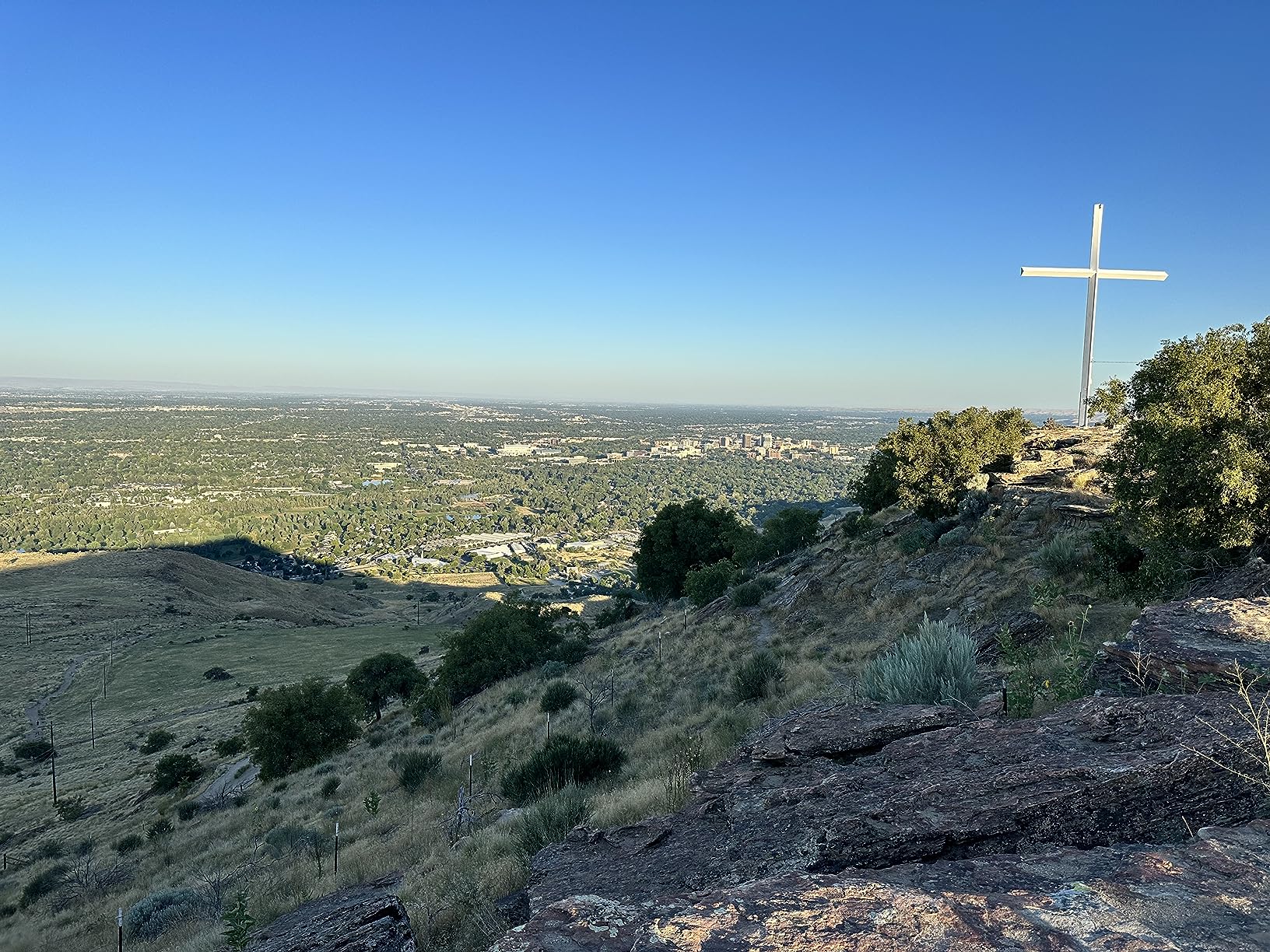
My Overall Assessment
After 6 weeks of testing across varied conditions, the Merrell Moab 3 Waterproof earns a solid but not exceptional rating. These are dependable, middle-of-the-road hiking shoes that do most things well without excelling in any particular area.
Detailed Performance Scoring
Comfort (7.5/10): Excellent out-of-the-box fit and reasonable long-term comfort, though cushioning compresses over time. The wide toe box works great for broader feet.
Traction (9/10): The Vibram TC5+ outsole is genuinely excellent across all surface types I tested. This is probably the shoe’s strongest feature.
Durability (7/10): Build quality feels substantial, but customer reports of premature glue failure and sole separation are concerning. Time will tell on long-term durability.
Waterproofing (6.5/10): Works well initially but seems prone to failure after several months. Fine for light moisture, questionable for serious wet conditions.
Weight (6/10): At 2+ pounds, these are noticeably heavier than modern alternatives. The weight provides protection but impacts all-day comfort.
Value (7.5/10): At $120-130, they’re reasonably priced for the feature set, though not a standout value compared to competition.
Overall Score: 7.3/10
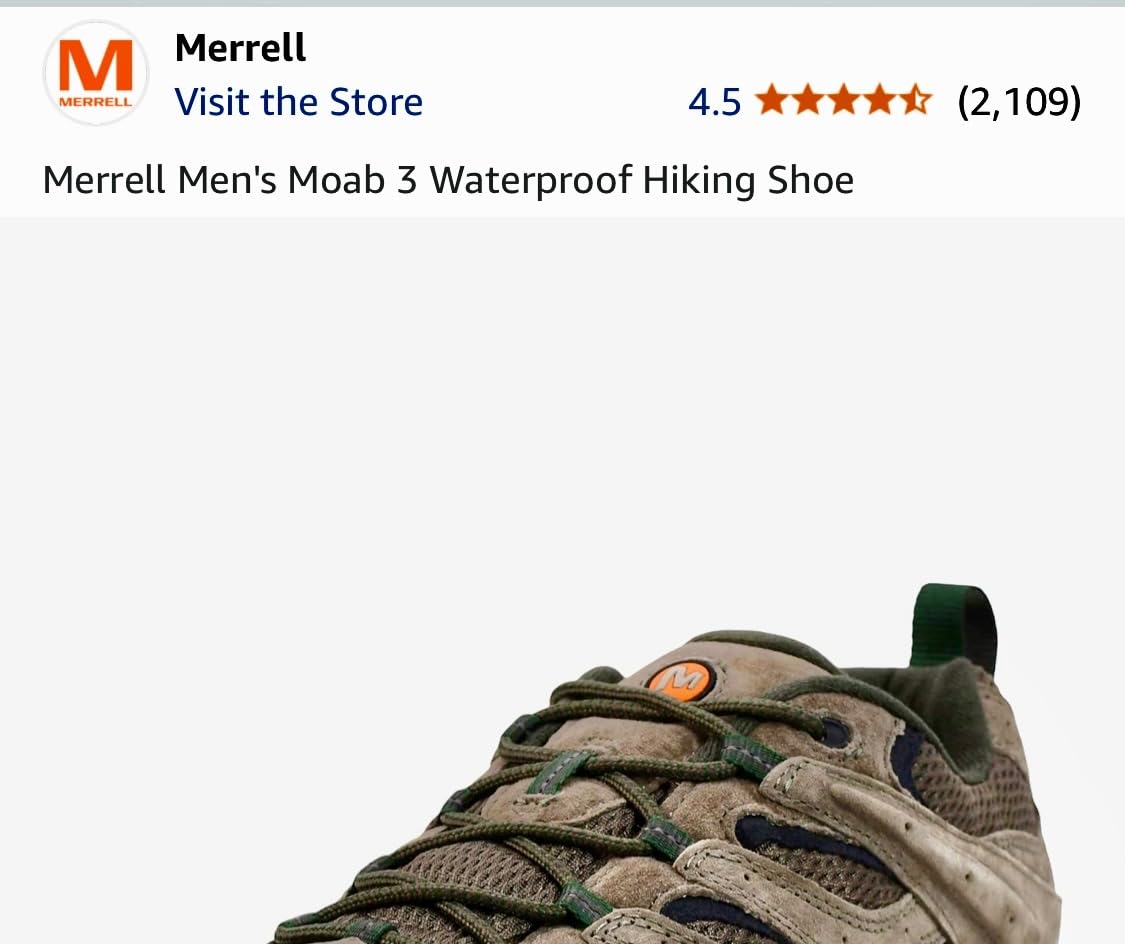
What Other Hikers Are Saying
The customer feedback pattern is remarkably consistent across hundreds of reviews. Guys consistently praise the immediate comfort, solid traction, and wide-foot accommodation. The most common complaints center on sizing inconsistency, waterproof failure after 6+ months, and increased stiffness compared to the beloved Moab 2.
Interestingly, many long-term Merrell users report that the Moab 3 runs smaller and stiffer than previous generations. Multiple reviewers recommended sizing up by a half-size, especially if you’re between sizes.
The durability feedback is mixed – some users report years of reliable service, while others experienced glue failure or sole separation within months. This suggests potential quality control inconsistencies that are concerning for a premium hiking shoe.
Value Assessment
At the $120-130 price point, the Moab 3 competes with solid options from Columbia, Keen, and Salomon. It’s not the cheapest option, but it’s not premium-priced either. The value proposition depends heavily on how the long-term durability plays out.
For guys who prioritize immediate comfort, wide-foot accommodation, and proven traction, the price is reasonable. However, if you’re looking for lightweight performance or bombproof waterproofing, your money might be better spent elsewhere.
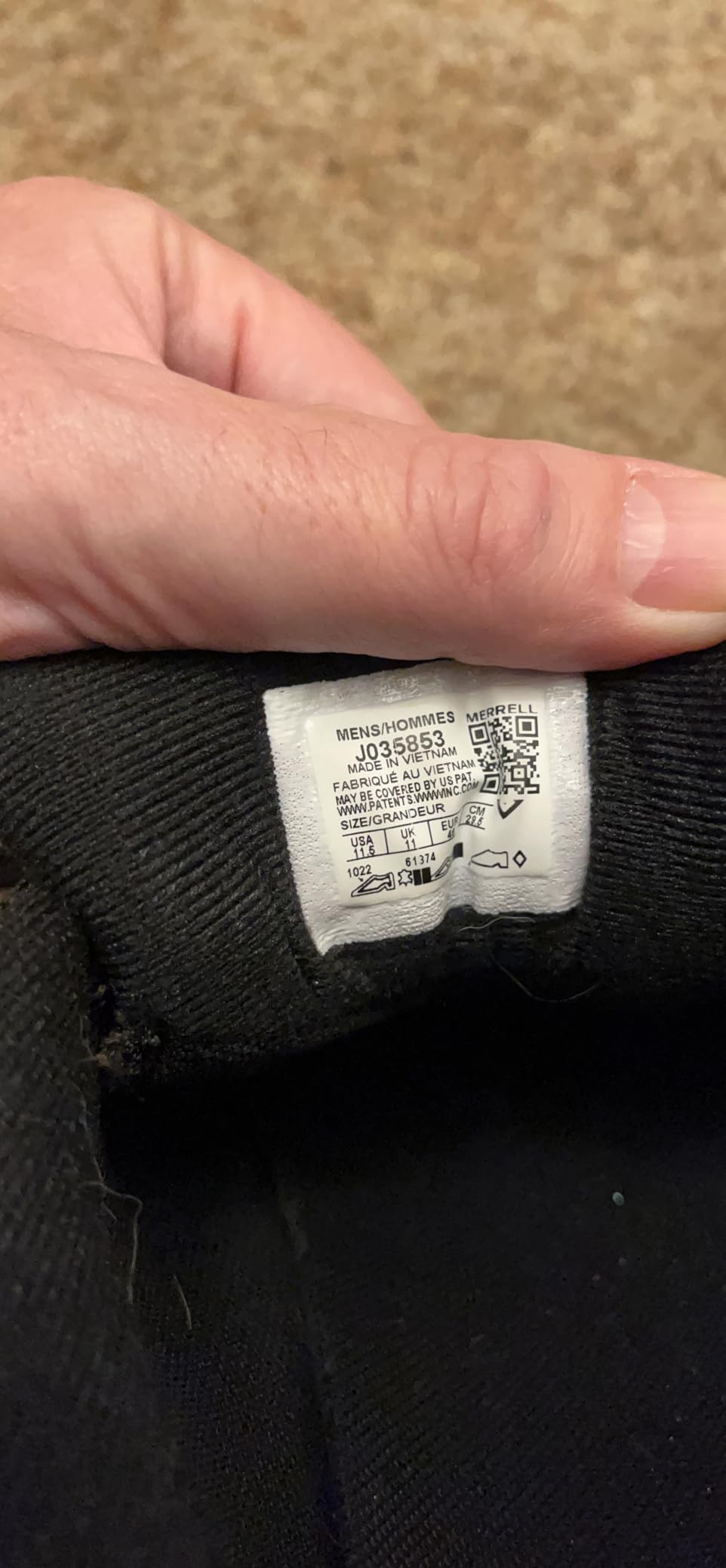
Final Verdict
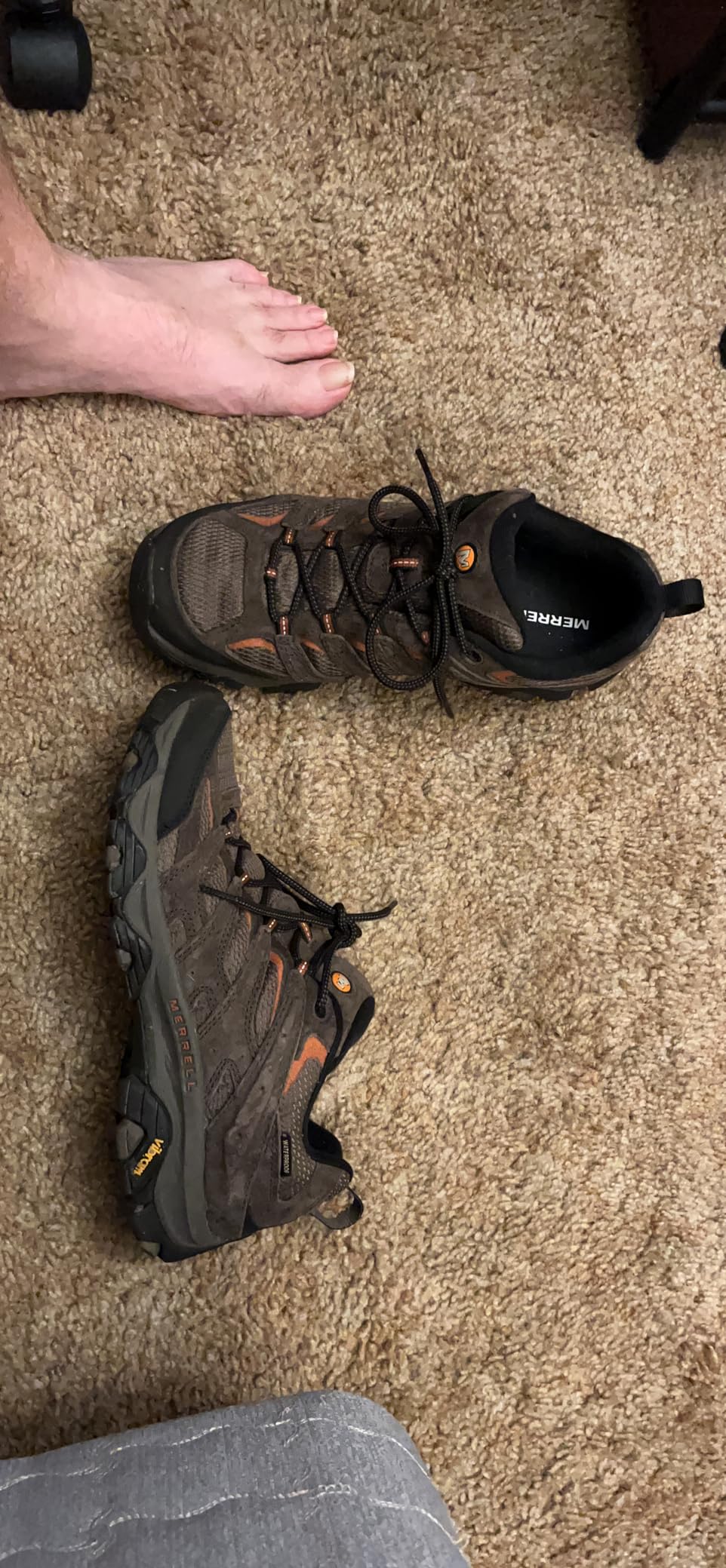
The Good and The Bad
Buy These If: You need wide-toe-box accommodation, prioritize out-of-the-box comfort, want proven Vibram traction, prefer traditional hiking shoe construction, or need something for moderate day hiking and casual outdoor use.
Skip These If: You’re looking for lightweight trail performance, need reliable long-term waterproofing, want premium cushioning technology, are concerned about durability consistency, or prioritize breathability over weather protection.
Who Should Buy the Merrell Moab 3 Waterproof?
These shoes work best for recreational day hikers, guys with wider feet who struggle with narrow trail runners, casual outdoor enthusiasts who need versatile footwear, and hikers who prioritize traditional construction over cutting-edge materials.
They’re also a solid choice for people who need a comfortable walking shoe that can handle varied surfaces – several users reported success using them for daily wear, travel, and work situations requiring all-day standing.
Better Options for Specific Needs
For Lightweight Performance: Consider Salomon X Ultra 3 GTX or Merrell’s own Trail Glove series
For Superior Waterproofing: Look at boots with full Gore-Tex construction like Danner or Vasque options
For Budget-Conscious Buyers: Columbia Newton Ridge offers similar features at lower cost
For Maximum Durability: Full leather boots from traditional manufacturers may better serve heavy-use scenarios
Final Recommendation
The Merrell Men’s Moab 3 Waterproof is a competent, if unremarkable, hiking shoe that delivers on most of its promises. It’s comfortable, reasonably durable, and features excellent traction. However, waterproofing concerns and weight limitations prevent it from being a standout recommendation.
At $120-130 on Amazon, it represents fair value for moderate hiking needs, especially if you can find it on sale. Just be aware of the sizing considerations and potential long-term waterproof degradation.
🛒 Get the best deal:
Frequently Asked Questions
Do Merrell Moab 3s run true to size?
Based on extensive customer feedback, the Moab 3 runs about a half-size smaller than the previous Moab 2 generation. Many users recommend sizing up, especially if you’re between sizes or have wider feet.
How long does the waterproofing last?
Customer reports suggest the waterproofing performs well for 4-6 months of regular use, then begins to degrade. Merrell customer service indicates the proprietary membrane requires periodic re-treatment with waterproofing spray.
Are these good for people with wide feet?
Yes, the Moab 3 offers a generous toe box and comes in wide widths. Multiple wide-footed users praised the comfortable fit without pressure points.
How do they compare to the Moab 2?
The Moab 3 features enhanced cushioning and a grippier outsole but runs smaller and stiffer than the beloved Moab 2. Some longtime Merrell users prefer the Moab 2 for overall comfort.
Can I use these for everyday wear?
Absolutely. Many users successfully wear these as daily walking shoes, for work situations requiring long standing, and for travel. The versatility is one of their strong points.
What’s the break-in period?
One of the Moab 3’s best features is zero break-in time. They’re comfortable right out of the box, which is rare for hiking shoes in this category.
Are they worth the price?
At $120-130, they offer reasonable value for the feature set, though they’re not a standout bargain. Sales pricing can make them more attractive, and they’re available on Amazon with competitive pricing.
Performance Summary Table
| Category | Score | Notes |
|---|---|---|
| Comfort | 7.5/10 | Excellent initial comfort, cushioning compresses over time |
| Traction | 9.0/10 | Outstanding Vibram TC5+ performance on all surfaces |
| Durability | 7.0/10 | Solid construction, but QC concerns with glue failure |
| Waterproofing | 6.5/10 | Works initially, degrades after 4-6 months regular use |
| Weight | 6.0/10 | Heavy by modern standards but provides protection |
| Value | 7.5/10 | Reasonable pricing for feature set, good Amazon deals |
| Overall Score | 7.3/10 | Solid performer with notable limitations |
Get the best price on Amazon:

